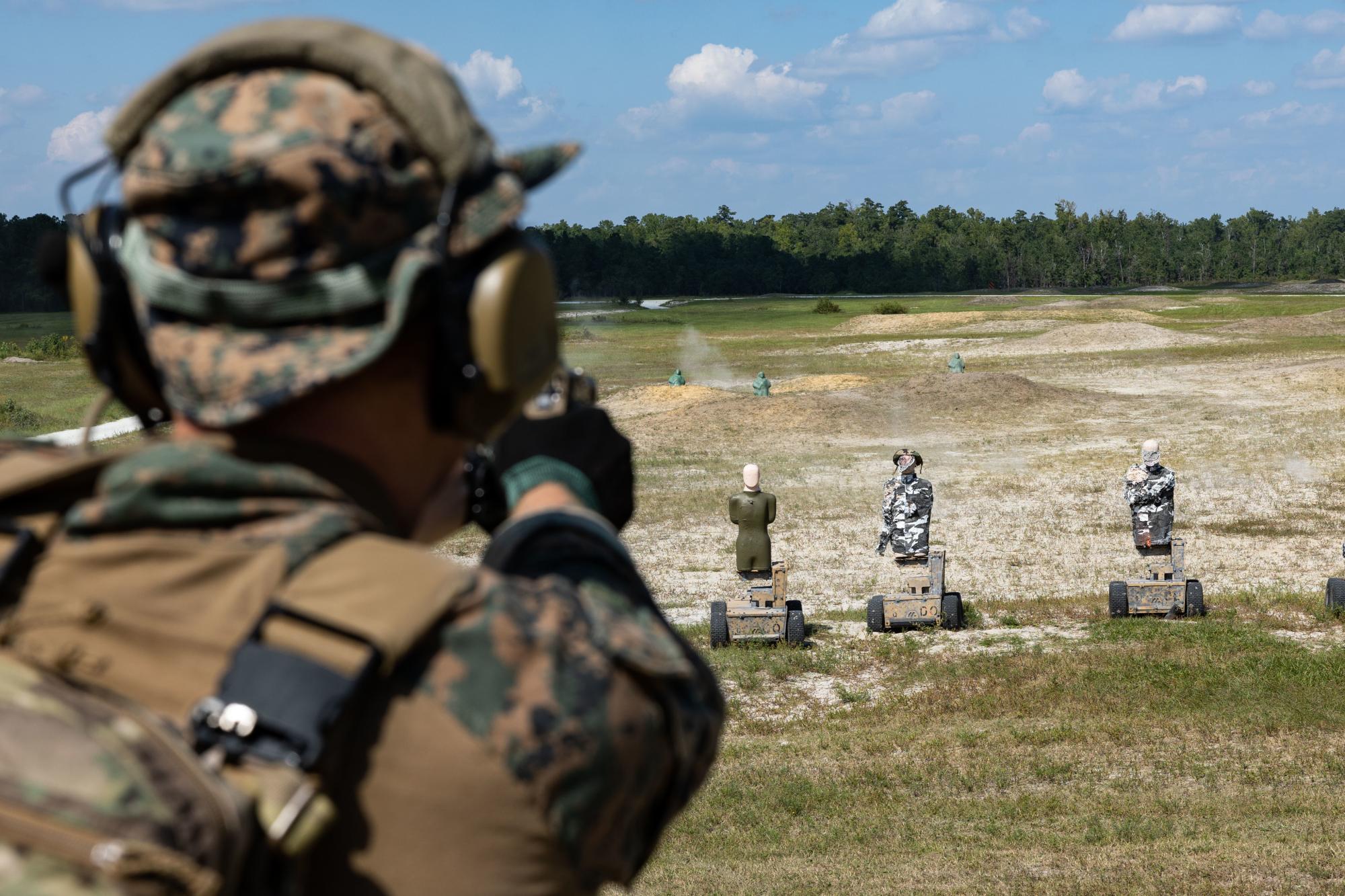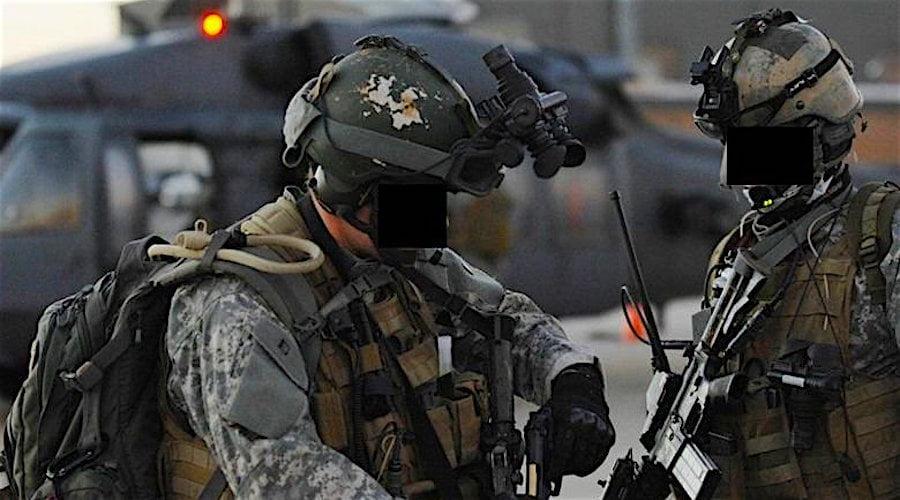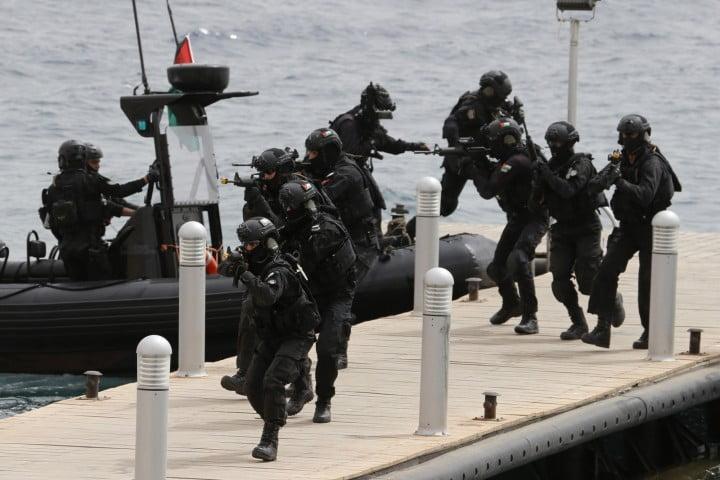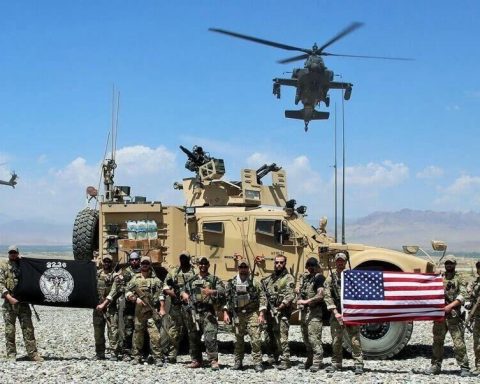The Maritime Special Purpose Force (MSPF) is a distinct unit within the Marine Expeditionary Unit (Special Operations Capable), or MEU (SOC), that provides an additional operational capability. The MSPF is comprised of personnel from the Marine Expeditionary Unit’s major subordinate elements, which are chosen based on their expertise and training. The MSPF can be utilized to complement or enhance conventional operations, or to execute specialized maritime missions.
Introduction
This article aims to provide a comprehensive understanding of the MSPF, including its composition, tasks, and training. It is important to note that the MSPF is not an independent entity, and therefore relies on the Marine Expeditionary Unit for various types of support, including logistics, intelligence, communications, transportation, and supporting fires. The commander of the Marine Expeditionary Unit maintains control over the MSPF.
One of the defining features of the MSPF is its ability to be quickly adapted to specific missions. This is accomplished through tailored training, which includes a range of skills and tactics, such as small unit tactics, specialized diving, and airborne operations. The MSPF is not intended to replace dedicated Special Operations Forces, but instead provides an additional resource to the Marine Expeditionary Unit, allowing for greater flexibility in a variety of operational environments.
Tasks
The MSPF are a highly trained unit responsible for a diverse range of tasks. Some of the key tasks performed by MSPF include deep reconnaissance, in extremis hostage rescue in urban environments, special demolition operations, clandestine recovery of personnel and equipment, GOPLAT operations, clandestine reconnaissance and surveillance, direct action, and close-quarters combat (CQB), as well as maritime interdiction operations.
Deep reconnaissance involves gathering intelligence on enemy movements and positions in the field. This is a critical task that requires stealth, patience, and meticulous planning.
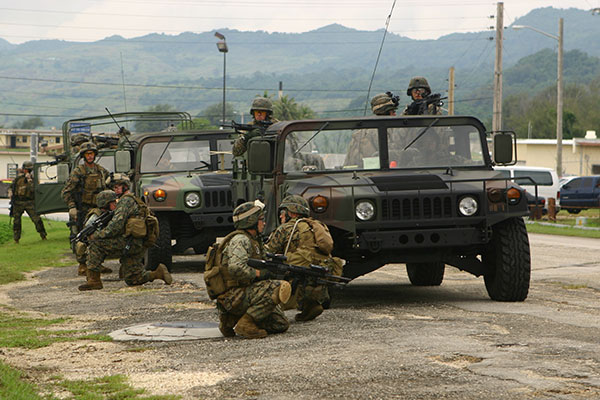
In extremis hostage rescue in urban environments involves the rapid extraction of hostages from a building or other structure while under the threat of extreme danger. This requires specialized training, equipment, and tactics.
Special demolition operations involve the controlled destruction of structures or other objects in order to achieve specific military objectives. This is a highly technical task that requires precision and attention to detail.
Clandestine recovery of personnel and equipment involves the retrieval of individuals or items from hostile territory without detection. This requires a high level of skill and experience in covert operations.
GOPLAT operations involve the deployment of forces to disrupt or eliminate terrorist activities in support of U.S. national security interests. This is a critical task that requires a strong understanding of terrorist tactics and the ability to respond quickly to changing situations.
Clandestine reconnaissance and surveillance involve gathering intelligence on enemy activities without detection. This requires advanced training and equipment, as well as a deep understanding of the enemy’s tactics and capabilities.
Direct action and CQB involve engaging the enemy in close-quarters combat, often in urban environments. This requires specialized training in tactics and weapons, as well as the ability to make split-second decisions in high-pressure situations.
Maritime interdiction operations involve intercepting and boarding vessels suspected of carrying illegal goods or personnel. This is a critical task for maintaining U.S. national security interests and requires specialized training in maritime operations and law enforcement.
Organization
The MSPF, or Maritime Special Purpose Force, is a specialized unit of the United States Marine Corps that is designed to perform a variety of tasks in a maritime environment. The MSPF is organized into six distinct elements, each with its own specific function.
The first element of the MSPF is the Command Element. This element is responsible for the overall command and control of the force. It provides guidance and direction to the other elements, and ensures that they are working together effectively.
The second element is the Covering Element. This element is made up of one or more reinforced rifle companies, typically consisting of a specially trained platoon from the MEU(SOC) boat company. The Covering Element provides security and support for the other elements, and is usually deployed ahead of the main force to establish a defensive perimeter.
The third element is the Assault Element. This element is made up of the deployed Force Recon Direct Action Platoon (DAP). The Assault Element is organized to conduct on-scene command, assault, security, and support functions. They are responsible for the direct action missions of the MSPF.
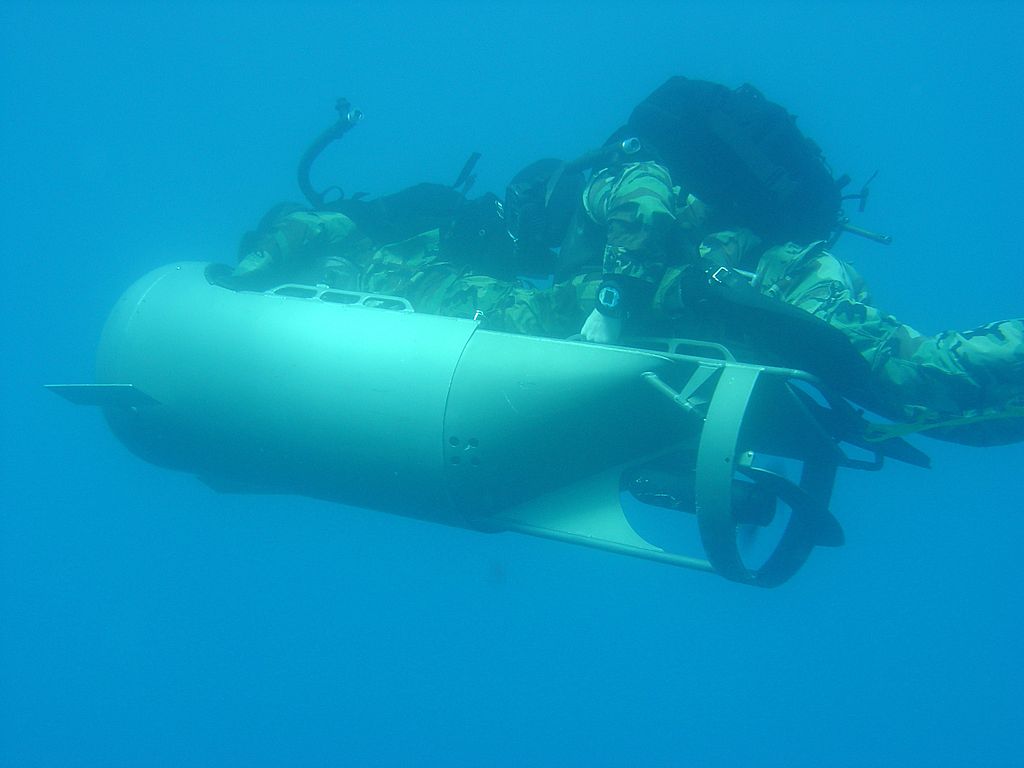
The fourth element is the Reconnaissance and Surveillance (R&S) Element. This element is composed of the MEU(SOC) Battalion Landing Teams (BLT) Surveillance and Target Acquisition (STA) Platoon, a Radio Recon Team (RRT) from the MEU(SOC) Radio Battalion Detachment, and elements of the MEU(SOC) Intelligence Section. The R&S Element is responsible for conducting reconnaissance and surveillance, sniper control and support, counter-intelligence, human and signal intelligence, and electronic warfare.
The fifth element is the Aviation Support Element. This element provides assault support and close air support (CAS) for the MSPF. They are responsible for providing air support to the other elements, and are usually deployed from aircraft carriers or other naval vessels.
The final element of the MSPF is the Naval Special Warfare Element. This element is made up of the MEU(SOC)’s deployed SEAL Strike Platoon. They are responsible for conducting special operations missions in a maritime environment, and are highly trained in a variety of skills, including underwater operations, small unit tactics, and close quarters combat.
Training
Initial Training Phase
The Maritime Special Purpose Force (MSPF) undergoes rigorous training during the Initial Training Phase, acquiring specialized skills necessary for executing the special operations missions associated with the MEU Special Operation Capable (SOC) program. This phase of training focuses on honing individual and small unit skills, and it includes instruction provided or coordinated by the Special Operations Training Group (SOTG).
Among the skills taught during this phase are specialized demolitions, which enable selected elements of the Marine Expeditionary Unit to conduct precision destruction of targets. The Breacher Course is designed for the Assault Element of the MSPF and imparts the ability to conduct explosive and non-explosive entry into designated targets, with participation by Explosive Ordnance Disposal personnel. The Urban Sniper/Designated Marksman Course is intended for qualified 8541 Scout Snipers, designated marksmen, and supervisory personnel responsible for planning and deploying urban snipers within the MEU’s Maritime Special Purpose Force.
The course covers various topics, such as sniper-initiated assault, surgical shooting, live night fire engagement, urban movement, counter-sniper operations, rapid/multiple threat engagement, Maritime interdiction Operations (MIO), and covering force operations. Only snipers who have successfully completed this course are eligible to participate in live fire Situational Training Exercises during Training in an Urban Environment (TRUE) and Special Operation Capable Exercise (SOCEX).
The Urban Reconnaissance Surveillance Course is designed to train personnel from the Division Reconnaissance Detachments, the GCE’s Surveillance and Target Acquisition Platoon, Radio Battalion Detachment, and the Intelligence Company Detachments in conducting Urban Reconnaissance and Surveillance (R&S). The course provides training in R&S basics, intelligence considerations, R&S planning, urban route planning and movements, introduction to direct action operations, Surveillance and Reconnaissance Center operations, escape and evasion techniques, surveillance/counter-surveillance techniques and equipment, and urban communication procedures.
This training focuses on reconnaissance in support of special operations and conventional missions, with specific emphasis on urban operations. This course also provides an excellent opportunity to integrate with the Amphibious Squadron’s (PHIBRON) Naval Special Warfare Detachment (NavSpecWar Det).
The Security Element Training is designed for a platoon-sized force and develops the skills necessary for the force to function in support of the MSPF Assault Element. The platoon is trained in limited Close Quarter Battle (CQB) skills, internal security procedures, hostage handling procedures, and other capabilities required to support the Assault Element. Finally, the CQB course is intended for the Assault Element of the MEU’s Maritime Special Purpose Force, with a focus on advanced marksmanship skills and tactics.
Intermediate training phase
During the Initial Training Phase, the Maritime Special Purpose Force (MSPF) integrates all its elements to perform operations with the Marine Expeditionary Unit’s (MEU) Special Operations Capable (SOC) program, PHIBRON, and Maritime Security Elements (MSE). The training will focus on enhancing the MSPF’s special operations skills and capabilities, such as sniper proficiency, Close Quarter Battle (CQB), specialized demolitions, clandestine reconnaissance and surveillance, Maritime Interdiction Operations (MIO), Gas and Oil Platform (GOPLAT), clandestine recovery, direct action, and In-Extremis Hostage Recovery (IHR) in an urban environment. Remedial and sustainment training will be conducted as required to improve any identified deficiencies.
An example of this training in action was demonstrated during the African Lion 14 exercise when U.S. Marines with the Special-Purpose Marine Air-Ground Task Force Crisis Response conducted landing zone security at Tifnit Military Installation in Morocco on April 3, 2014. The SP-MAGTF Crisis Response is a self-deployable and highly mobile response force allocated to the U.S. Africa Command, with a mission to respond to missions in permissive and uncertain environments, to protect U.S. citizens, interests, and other designated persons. This exercise allowed the SP-MAGTF Crisis Response to train their rapid response capability.
Maritime Special Purpose Force Interoperability Training aims to integrate different elements of the force including Command and Control, Reconnaissance and Surveillance, Assault, Security, and Aviation Assault. This training can be held either locally or off-site, and it is essential for TRUE, a training program that takes place in unfamiliar urban environments. TRUE includes participants from the CE, GCE, ACE, CSSE, and MSPF, and it presents an opportunity to improve the force’s proficiency in reconnaissance and surveillance (R&S) and integrate unique MSPF capabilities with the R2P2. It also involves interacting with external agencies to conduct clandestine R&S operations.
GOPLAT & MIO Training provides an opportunity for MSPF to apply its special skills to unique target platforms, and it can be conducted independently or jointly with PHIBRON’s NavSpecWar Det. Coordination with civilian GOPLAT operators and merchant shipping agencies requires SOTG’s support.
